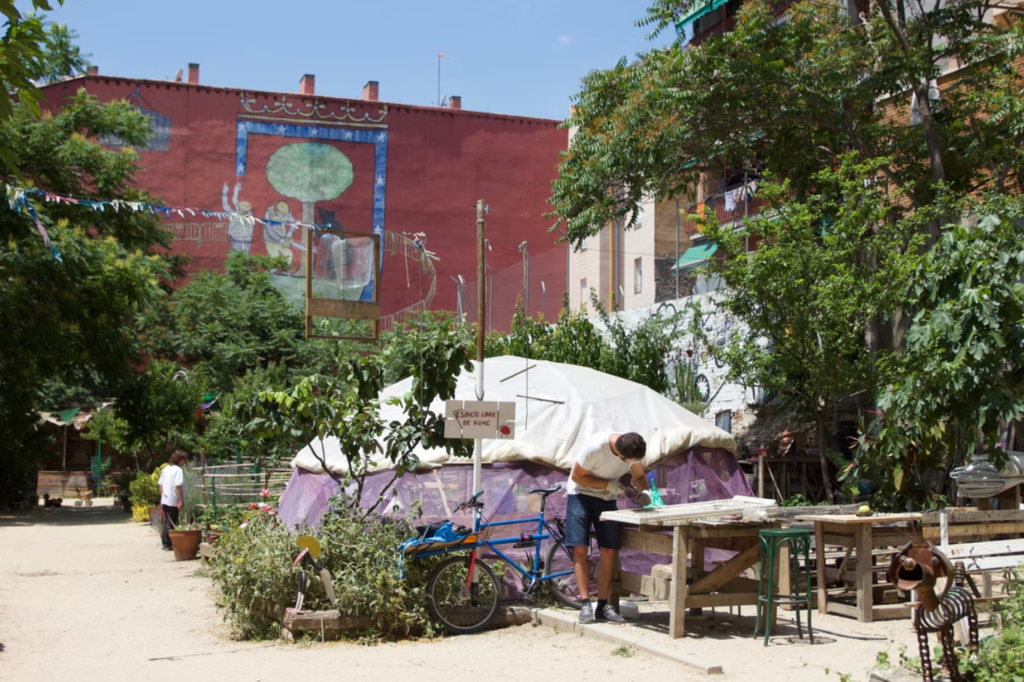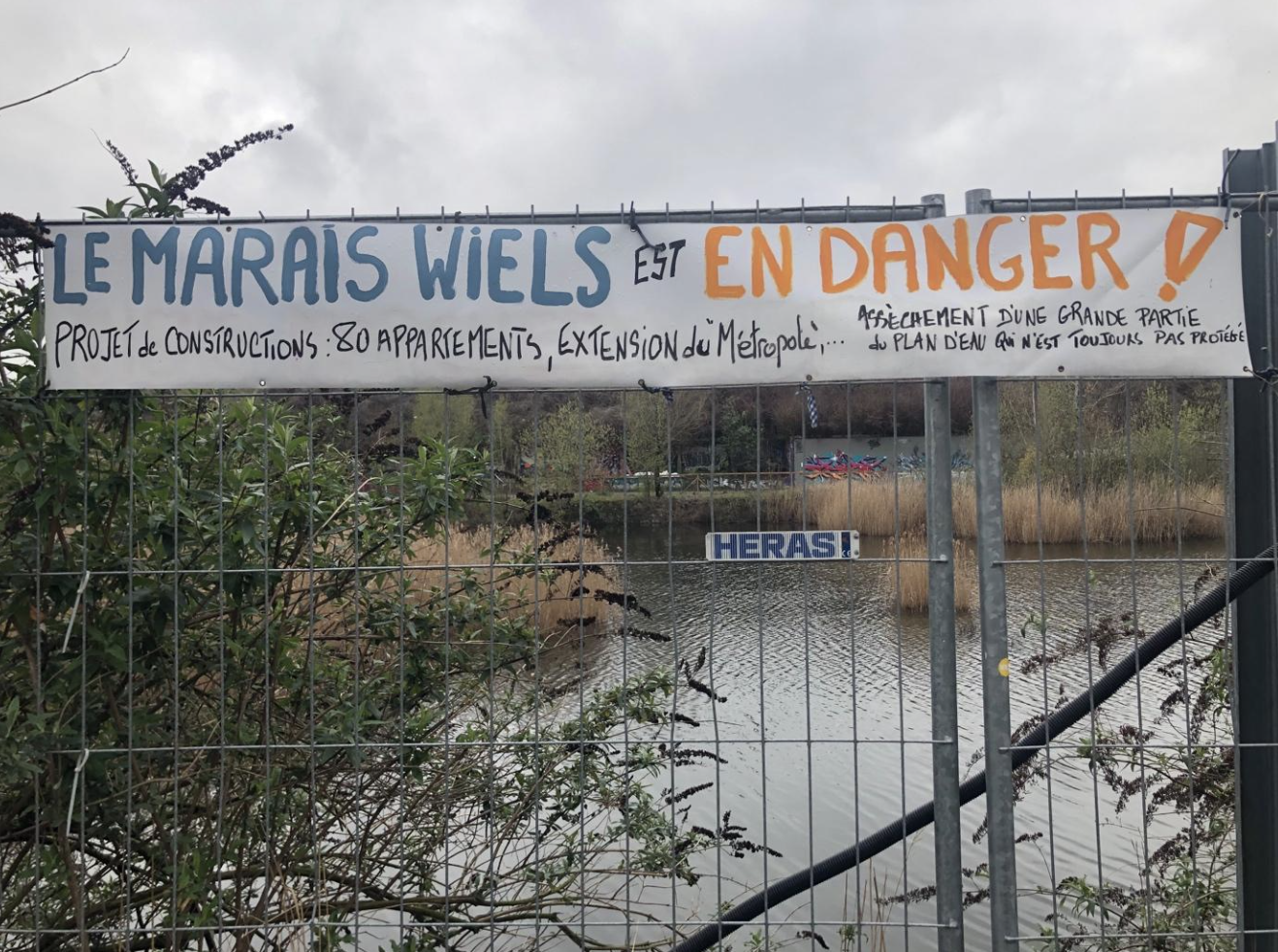Introduction
Territories and cities are facing an unprecedented period of adaptation to cope with climate change and the collapse of biodiversity. This period, which may seem extremely anxiety-provoking, is also especially challenging.
Rethinking and reconfiguring our local ‘hospitality’ is a vast undertaking, and the aim of this article is to outline some key issues: how can we welcome others and improve cooperation between people and nature? How can we regenerate areas that have been destroyed, artificialized or anthropized?
Everywhere, solutions are emerging to take care of territories and cities.
Artists have a role to play in decoding these new forms of cooperation and initiating new narratives. Through their methods and productions, they offer a different way of looking at the world, allowing us to experience realities other than our own. Some of the experiments described in the contributions to this special issue open up a particularly rich field of possibilities at the crossroads between spatial planning and artistic practices.
The ‘Hospitality’ topic will include contributions by artists and other professionals in the cultural / territory field and testimonials from their own experience. This article provides some background on the concept of hospitality, suggests some food for thought and discusses the associated methods in the field of urban planning.

Part 1 / Regional hospitality: what are we talking about?
The word ‘hospitality’ has many meanings and variations in an urban context; let’s take a look at them.
Welcoming communities
First and foremost, hospitality refers to the notion of welcome. A city can be welcoming to its inhabitants (those who have a place to live) and to others, tourists, foreigners and ‘visitors’ (i.e : “habiteur” in French, this term still existed in the middle of the 19th century; it refers to people who live there and is closer to the question of habits). At a time when populism and anti-immigration policies are on the rise in Europe and beyond, the conditions for welcoming people (other than tourists) to our towns and cities are open to question. How can we ensure that the conditions for welcoming newcomers are dignified, without excluding or segregating them into the ‘transition zone’, as Burgess noted in the case of Chicago back in 1925?
Moreover, when we talk about the conditions for a city of hospitality, the question immediately arises of the appropriate scale for doing so. Hospitality must be considered both on a micro scale, i.e. the scale of individual homes, spaces and communities, and on a macro scale, that of the city as a whole (Carlier, 2016).
Hospitality as a prerequisite for regional accessibility
A hospitable city ensures equal access to primary needs for its entire population (water, housing, health – to name but a few). It also provides spaces for conviviality and sharing, enabling cooperation and collaboration with others. In this respect, contributions from the human sciences on the ‘urban commons’ are instructive. They provide evidence of new practices in local democracy, resource management and the use of space, accompanied by original legal arrangements. In a sense, urban commons initiatives are helping to make cities more hospitable and are also renewing part of the urban production process.
Hospitality also involves issues of accessibility, both in terms of housing and public spaces. Access to housing includes not only the availability of affordable housing, but also regulation to prevent gentrification, which excludes the most vulnerable groups. As highlighted in the European ‘Inclusive City’ project, the challenges of accessibility in the urban context go beyond the question of financial accessibility: these are spaces that make themselves accessible to everyone (children/women/disabled people) and that are socially inclusive.
Territories that take care
Another facet of the hospitable city is the urban planning of care. This aspect, relatively confidential a few years ago, has come to the fore in the post-covid context. Many local authorities have put care and health-oriented urban planning on their agendas. Care-based urban planning promotes a special focus on social dynamics, local relationships and the sustainability of actions (it’s not so much a question of being profitable quickly, but of looking at transformations in a sustainable way). The approach is more cross-functional and aims to provide care, facilitate social links and quality of life, and preserve essential needs. Care also implies responsible management of the urban environment, limiting pollution, promoting ecologically sustainable development and taking into account the effects of climate change on populations. Works such as Williams‘ (2019) “The possibility of care-full cities” explore the links between feminist thinking and this new form of urbanism.
Finally, making the city more hospitable invites us to move away from an anthropocentric vision of hospitality: urban planners are invited to think about the conditions for welcoming living beings. How can we ensure that human and non-human species live together? In a book published in 2020, Philippe Clergeau calls for a biodiversity-based approach to urban planning. Indeed, how can we integrate this consideration of the living world into development projects at a very early stage? This new emphasis on life and nature will certainly help to improve the ecological quality of urban life, as well as the sensitive quality of places.

Part 2 / Hospitality in urban studies
Making the city hospitable invites us to look at the methods that commit us to doing things differently, while renewing the set of actors in the territorial fabric. Artists, sociologists and environmentalists could all become players in the new territorial fabric in the coming years.
Trends are emerging. In recent years, for example, there has been a proliferation of initiatives to build “child friendly cities”. They are based on one observation: the gradual disappearance of children from public spaces and the dehumanisation of our urban spaces. This trend accelerated in the early 1970s with the rise of the ‘motor city’, and children’s place in public spaces gradually shrank. To tackle this phenomenon, a number of cities are proposing solutions: promoting free play; making it easier for people to walk and move around independently; and getting children to play a real part in making the city their own.
For example, the city of Copenhagen has introduced free indoor ‘staffed playgrounds’ where children can come and play in bad weather (even unaccompanied) . In Sri Lanka, since 2018, the Batticaloa municipality has set up municipal committees to listen to and implement solutions tailored to children’s needs: a series of adapted play areas, colourful and welcoming public spaces, and play/reading rooms have been opened in the city’s least-favoured neighbourhoods.
Another subject in urban studies is the place of women in public space and, more broadly, urban planning from a gender perspective. At European level, we should pay tribute to the work of German scientists who have been organising conferences on these subjects for 30 years. Some cities (Vienna, Nantes) are implementing action plans to make their cities hospitable to women. In Zimbabwe, a major information and mediation campaign has been conducted in markets and bus terminals to combat the sexual violence that has taken hold in public places. The campaign is supported by the Spotlight initiative, a United Nations programme backed by the European Union to end violence against women and girls.
Another point is the use of indicators to guide action and adjust development projects. For example, it is becoming increasingly common to take account of the factors that determine overall health when designing neighbourhoods. Technical devices (to measure air quality, temperature, the effects of shading) combined with real-time studies (on biodiversity, the state of health of residents, social cohesion) make it possible to implement tailor-made urban solutions to improve people’s overall health. It’s also a way of considering the interdependence of issues (social, environmental, health, etc.). There are other ways of thinking about territories in terms of vulnerability. Questions of urban metabolism, resilience and adaptation are coming back to the forefront of the discussion on urban production.
On a smaller scale, some people are committed to the fight against inhospitable cities, taking up the subject of the commons. Multidisciplinary groups are campaigning for the right to experiment and are deploying temporary/transitory urban planning methods. By temporarily occupying vacant spaces to create shared projects, and by imagining open, welcoming spaces, these projects aim to make cities and regions more hospitable.
Finally, as we mentioned in the introduction, the hospitable city invokes the sensitive and sensory aspects. How can we capture our feelings, perceptions and representations of places? How can we work with urban atmospheres?
Artists and companies such as Alice Groupe Artistique, Rimini Protokoll and Stephan Shankland are looking at this issue from a different angle, taking up the theme of hospitality as a way of creating and renewing urban imagination.

Conclusion
These insights show us that welcoming people, making the city accessible to all, and caring for nature are all central issues in the design of tomorrow’s cities and regions.
Even if the discussions are/will be arduous, even if it is not easy to make a complete U-turn in the way we build our regions, the future calls for a new approach to our territories, at all levels of the urban project.
New, more cross-disciplinary approaches are emerging, involving artists and cultural players at an earlier stage. This special issue shows just how fertile the bridges between the worlds of urban planning, art and culture can be. Building with a multiplicity of viewpoints and professional sensibilities seems to be one way of guaranteeing the hospitality of our territories.
Content & writing: Hélène Morteau and Emmanuelle Gangloff (Bien Urbaines Agency)
Photos:
Article photo: © Amandine Loget
1. Citizen lab in Madrid // Esta es una plaza. © Alice-Anne Jeandel
2. The “Marais Weils” in Bruxelles // Citizen demonstration to preserve the marsh from a private property purchase ©Emmanuelle Gangloff
3. Play & Leisure, Child friendly cities initiatives © UNICEF Sri Lanka



